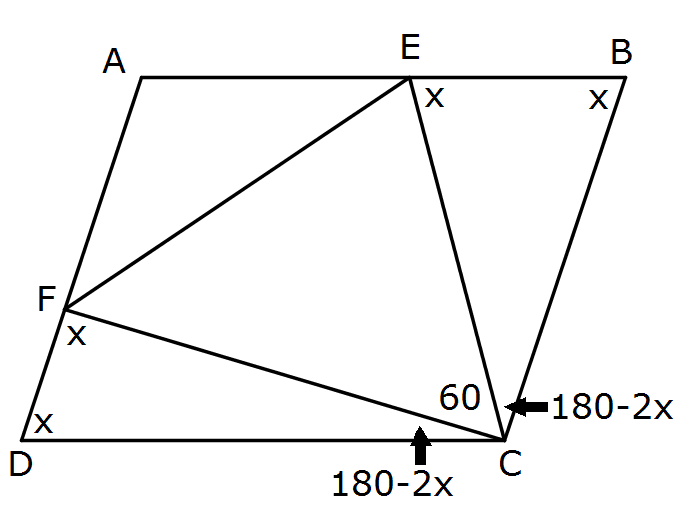Copyright © University of Cambridge. All rights reserved.
'Equal Lengths' printed from https://nrich.maths.org/
Show menu

Triangle $DFC$ is isosceles $(CF=CD)$.
Hence $\angle DFC = \angle FDC = x^{\circ}$.
Hence $\angle FCD = (180-2x)^{\circ}$ (angle sum of triangle).
Now $\angle EBC = \angle FDC = x^{\circ}$ (opposite angles of a parallelogram) and triangle EBC is isosceles (CE = CB). Hence $\angle BEC = x^{\circ}$ and $\angle ECB = (180-2x)^{\circ}$
Lines $AD$ and $BC$ are parallel and hence $$\angle ADC + \angle BCD = 180^{\circ}$$ Therefore: $$x+2(180-2x) + 60= 180$$i.e.$420-3x=180$ i.e. $3x=240$ i.e. $x=80$
This problem is taken from the UKMT Mathematical Challenges.
You can find more short problems, arranged by curriculum topic, in our short problems collection.